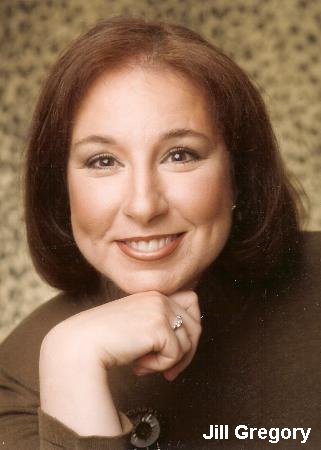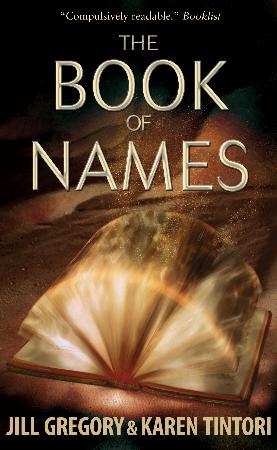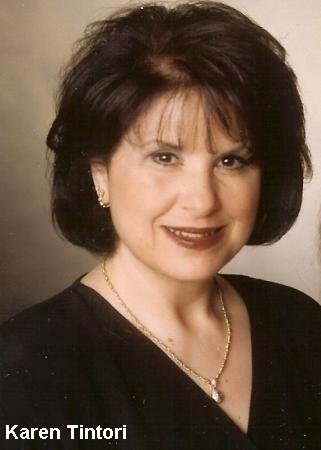|
I am
always on the lookout for new voices in the genre, so whist at
Thrillerfest in New York City this summer I kept my ears open. During my
scouting, I bumped into
Karen Tintori. Despite my shy and reserved nature [joke], Karen noticed my
English accent and was a little excited about her debut novel 'The
Book of Names' with fellow writer
Jill Gregory which has just been published in the UK by independent
publisher
Snowbooks and in the US by St Martin’s Press and translations in many other
countries have followed. I asked Karen to tell us a little about their joint
work – Ali Karim
More
than a dozen years ago, we first learned of the Kabbalistic legend that inspired
us to write The Book Of Names. We had already written three books
together – two novels (one of which was made into a CBS television
movie-of-the-week) and one non-fiction, and were busily concentrating on our
individual writing careers. Still, as long-time best friends who write with one
voice and have a blast doing it, we occasionally tossed around ideas, always on
the lookout for an exciting premise to springboard a new project.
Unexpectedly, a tantalizing idea came our way. One of Karen’s adult bar mitzvah
teachers told her about the mystical legend of the
Lamed Vovniks -- the 36 righteous souls of every generation on whose merit
alone, the Talmud says, God keeps the entire world in existence.
Fascinated,
Karen told Jill, and we immediately zeroed in on the possibilities, exploring
the quintessential writer’s question “what if?”
What if
someone knew the identities of this generation’s 36 righteous souls and decided
to kill them to end the world? What if someone else had an intensely personal
stake in saving them?
We stared
at each other in shock, certain we had a knock-out concept for a thriller -- a
thriller that would bring together mysticism, the fight between good and evil,
and the Jewish concept which teaches that if you save one life, it’s as if
you’ve saved the entire world, and if you destroy a life, it’s as if you’ve
destroyed the entire world.
But we
faced one impediment -- and it was a biggie.
According
to the sages, these righteous souls walk among us unheralded and unknown.
Humble, compassionate, and innately pure, the Lamed Vovniks bring the light of
the Divine into the world, and don’t even realize it. They have no idea of
their specialness, or of their monumental role in keeping the world intact.
Only God knows their names.
We were
stumped. We needed to create villains to target the Lamed Vovniks, and heroes
to find and protect them, but since no humans know who they are, how would our
heroes and villains be able to identify them, target them, save them?
This
dilemma stymied us for years. Sporadically, we’d return to our idea, but
continued to draw a blank on a way to “out” our hidden Lamed Vovniks. We wrote
other books, separately and together, yet kept being drawn back, pulled by the
mystical allure of these 36 souls.
In 2003,
determined to find a way to bring their story to light, we scheduled a
brainstorming dinner, and lingered well past coffee, batting ideas around with
the ferocity of a match between Serena and Venus Williams.
And
suddenly, it was there. The solution for our protagonist’s special knowledge of
the 36 – a solution so clear and luminous and perfect, we marveled that we
hadn’t hit on it before. It not only gave us a launching pad for our story, it
enhanced the mystical fabric of the tale.
That
summer, we walked for hours through Jill’s neighborhood, brainstorming non-stop,
intent on fitting together the other puzzle pieces. Who were our villains?
What was their motivation for seeking to destroy the world? How did they manage
to pinpoint the Lamed Vovniks to eliminate them? And little by little we
figured it out.
Once we
managed those initial breakthroughs, the plotting of the story which became
The Book Of Names, and many other elements, fell into place. Rapidly, we
outlined an international thriller based on a hidden history, one which would
allow us to explore our interest in the Kabbalah, mysticism, gemstone lore, and
the classic struggle between good and evil.
Before we
knew it, The Book Of Names began racing forward through our protagonist,
political science professor David Shepherd, a man tormented by the mysterious
names circling endlessly through his head. Names he’s been obsessively writing
in a journal since a childhood accident that nearly took his life.
Our
research took us to the ancient study of Kabbalah, its link to the Tarot, the
biblical story of Aaron, the High Priest, and his breastplate of magic stones,
as well as Gnostic philosophy and Jewish numerology. From the beginning, we
knew that a major event would take place near a specific site in London – and
serendipitously, access to the location we created in our imaginations turned
out to have a basis in fact. All along the journey, similar fortuitous “gifts”
came our way.
Almost
mystically, you might say, all of these disparate elements slid together as if
they’d been pre-cut for us by a jigsaw. That surprised us. Each bout of
research led us to another layer, another connective thread in weaving our
doomsday journey of apocalyptic proportions.
We set out
to spin a story that would take our readers on a thrilling adventure, but would
also allow them to glimpse the world in a different light.
But first
we had to glimpse that world ourselves. And we did. We lived in it for the
year it took us to write the book. Night and day we were as obsessed with the
mystery of the Lamed Vovniks as was David Shepherd.
We are
delighted that The Book Of Names has touched readers worldwide, with
translation rights sold to twenty countries. Whether in German, Dutch, Spanish,
Turkish or English, good versus evil has never looked quite like this.
Such is
the success of this thriller, they are hard at work on The Illumination, what
they term, their next hidden history thriller.
First published at
www.januarymagazine.com
|










